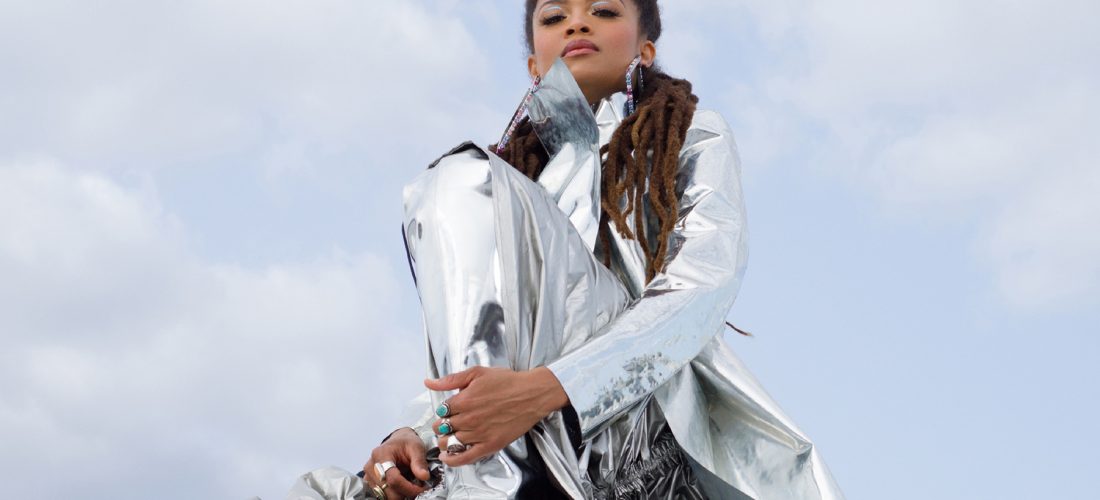Valerie June Merges Folk, Blues and Pop on the Meditative ‘The Moon and Stars: Prescriptions for Dreamers’
Valerie June has spent the past decade on her own meandering path towards artistic self-definition. Her 2013 album, Pushin’ Against a Stone was her breakthrough, establishing the singer’s distinctive country-blues whine as a vital voice in contemporary roots music.
But the album, co-produced by Dan Auerbach and Kevin Augunas (Edward Sharpe, the Lumineers), also positioned the singer as a rural anachronism amidst the post-Mumfords banjo boom, an image June has been carefully and subtly shedding ever since. She deliberately mapped out her next steps, waiting four years until 2017’s The Order of Time. That record was a transitional statement, full of blooming exploration that found the singer moving away from straightforward roots music in favor of “dancing on the astral plane,” as she sang at the time.
But June has never sounded more fully and thrillingly herself than she does on her latest album, The Moon and Stars: Prescriptions for Dreamers, which merges pop ambition, folksy open-heartedness and blues wisdom. On this 14 track song-cycle, June steps into her own as co-producer (alongside Jack Splash), adding modern drum programming, classic orchestration, and Afrobeat flourishes to her foundation of country-folk, R&B, and roots-rock. Her voice has never sounded more nimble than it does here: fragile one moment (“Fallin),” athletic the next (“Stay”).
The songs are meditative and impressionistic, sometimes outright non-narrative. “Within You” and “Stardust Scattering” evoke both the expanded mind of Revolver-era Beatles (“Merrily life is but a dream/Consciousness directs the stream,” she sings in the chorus of the latter) and the zen revelations of Leonard Cohen (“There’s a flow to everything,” she sings in its very next line).
More often, June is speaking to and working in the spiritual and sonic lineage of predecessors like Sister Rosetta Tharpe, guitarist Jessie Mae Hemphill, and soul legend Carla Thomas, the latter of whom makes a rare cameo during “Call me A Fool.” That song is the album’s most Stax-indebted throwback moment, and one of seven tracks that underscores the record’s secret weapon: renowned Memphis instrumentalist Lester Snell, who provides ornate string arrangements.
June writes in a moving, mysterious second person, and the “you” she addresses often feels like it could be referring to any number of things, often at the same time: June herself, a lover-turned-companion, a higher sense of divinity. Even as the singer-songwriter explores the landscape of her own spirituality, one of the album’s primary throughlines, she refuses to define it strictly. “Some call it prayer,” she sings on the concluding lullaby “Home Inside,” “I’d be a fool to let it have a name.”
The Moon and Stars ultimately feels like a record about perseverance, survival and acceptance, about turning one’s gaze from scars to nighttime stars. “Count my wrongs and multiply them,” she sings in the ethereal ballad “Colors,” “by the rights to justify what I feel inside.” Later on, on the breezy “Smile,” she transforms a classic pop refrain (“I’ll make it through”) into a moving mantra.
Then there’s “Why The Bright Stars Glow,” the album’s penultimate proper track, and its shimmering centerpiece. The warm piano ballad is a portrait in grace and hard-won contentment, with June reflecting on the long road that’s led her to this point over Snell’s swelling strings and June and Splash’s gentle drum loops. Where has her astral-plane journey led her? June only needs four words to answer such a heavy question: “Dancing in the sun.”
